Posts by: Hamish Johnston
Canada’s birthday physics, Liberty’s true colours, Trump’s Science cover
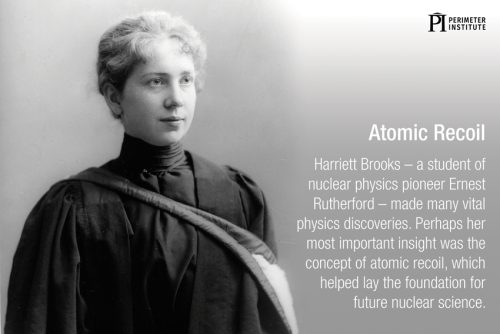
Famous Canadian: nuclear pioneer Harriett Brooks. (Courtesy: PI)
By Hamish Johnston
Tomorrow (1 July) is the 150th birthday of Canada. Or more precisely the anniversary of the day when three British colonies (one of which was already called Canada) joined together and started the long and peaceful journey to becoming fully independent of the UK in 1982. How very Canadian, and I should know because I am one of the 36 million Canadians who will be celebrating tomorrow.
Synonymous with physics in Canada over the past decade or so is the Perimeter Institute for Theoretical Physics in Waterloo, Ontario. Folks there have put together a selection of “13 physics innovations you may not know are Canadian”. I wasn’t aware of some of the innovations, including the work of Harriett Brooks (above). But I am pleased to say that I have met both of the physics Nobel laureates mentioned in the article – Art McDonald and Bert Brockhouse.
View all posts by this author | View this author's profile
Chicken sandwich goes stratospheric, socks for space, dressmakers have needle-sharp vision
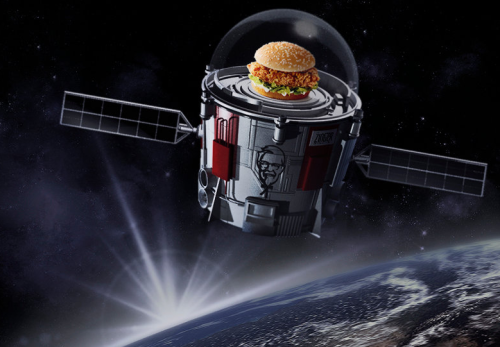
Space sandwich: a Zinger floats high above Earth. (Courtesy: KFC)
By Sarah Tesh and Hamish Johnston
If you could put anything on a high-altitude balloon, what would it be? World View Enterprises has opted for a spicy chicken sandwich. The company plans to run balloon excursions to the stratosphere and on 21 June it will make its debut voyage carrying a Zinger sandwich from Kentucky Fried Chicken (KFC) – but with no-one on board to eat it. According to the New York Times the flight is tied in with KFC’s current space-based advertising campaign and the sandwich will spend at least four days in the stratosphere. As well as planning to charge tourists $75,000 per person for a ride, World View Enterprises says that its balloons could also be used to create an early warning system for tornadoes. (more…)
View all posts by this author | View this author's profile
NASA showcases its latest tech investments
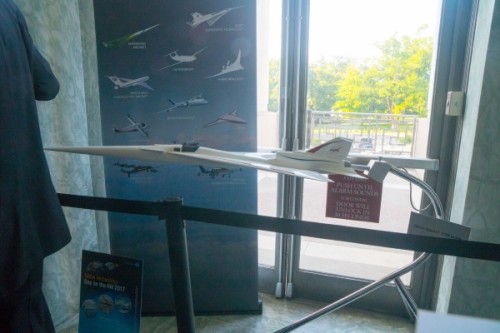
Cutting edge: NASA’s latest X-Plane (Courtesy: Lucina Melesio)
By Lucina Melesio in Washington DC
Yesterday in Washington DC NASA showcased its latest technology investments. The event took place just few steps away from Capitol Hill, where the US Congress will decide on the current administration’s proposed budget cuts for the agency.
“The technologies displayed here today illustrate how sustained investments made by NASA, industry and academia directly benefit our nation’s innovation economy,” reads the event’s brochure. “These technologies help America maintain its global leadership in aerospace and enable NASA’s current and future missions of exploration and discovery,” it continues.
View all posts by this author | View this author's profile
Send a birthday card to Fermilab, a huge periodic table, art meets quantum computing
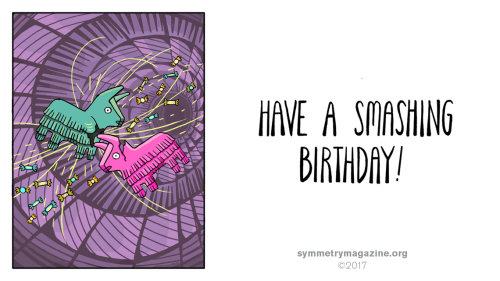
Best wishes: a birthday card for Fermilab (Courtesy: Corinne Mucha/ Symmetry)
By Hamish Johnston and Sarah Tesh
50 years ago this month, the particle physics facility that was to become Fermilab opened its doors for the first time. To celebrate a half a century of physics on the Illinois prairie, the folks at Symmetry have produced a set of themed birthday cards that you can print-out and send to your friends and family. Indeed, there is still time to send a card to Fermilab itself, because the big day isn’t until next Thursday (15th of June). My favourite card (above) uses colliding piñatas to illustrate the plethora of particles that were produced in Fermilab’s Tevatron – which smashed together protons and antiprotons between 1983-2011.
View all posts by this author | View this author's profile
Monuments to peer review and Canada, Marie Curie as superhero, a 3D book about Einstein
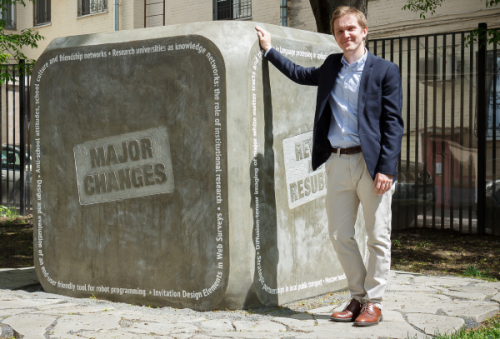
Cubist sculpture: a monument to peer review. (Courtesy: Igor Chirikov)
By Michael Banks and Hamish Johnston
You may remember a campaign to create a monument dedicated to those hard-working people who peer-review research papers. Last year, sociologist Igor Chirikov, from the National Research University Higher School of Economics in Moscow, raised $2521 on Kickstarter to turn an “ugly” block of concrete outside the university’s Institute of Education into a monument that reads “accept”, “minor changes”, “major changes”, “revise and resubmit” and “reject” on its five visible sides. Well, after months of toil that monument has now been unveiled by Chirikov in a ceremony at the institution that was attended by over 100 supporters. “Most understand the sarcastic nature of the monument and love it,” says Chirikov. “Many also wonder what’s on the bottom side of the monument.” Chirikov is thinking of hanging a small mirror on a nearby tree so that everyone can see “Accept” on the top of the cube.
View all posts by this author | View this author's profile
Identifying fingerprints, attractive scientists, what physics students should know
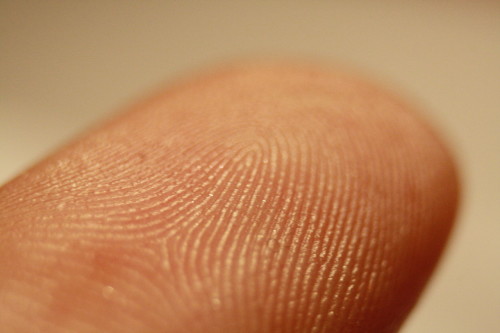
Easily recognized: could you do fingerprint analysis? (CC BY 3.0 / Frettie)
By Hamish Johnston
Do you have the pattern-matching skills needed for identifying fingerprints? If so, researchers at National Institute of Standards and Technology in the US want to hear from you. They have put together a visual quiz that tests your ability to “focus on minute visual details that would leave most people cross-eyed”. You can try the test here.
View all posts by this author | View this author's profile
Einstein, Hawking and Rees set to music, singing about virtual particles, tiny satellite will soon blast off
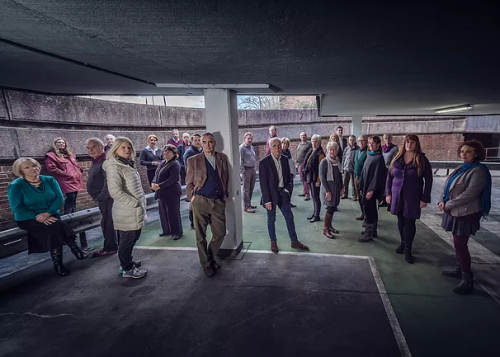
Singing multiverse: the Salisbury Chamber Chorus. (Courtesy: Salisbury Chamber Chorus)
By Hamish Johnston
“What I wanted to write was something about the universe and our place in it: from the Big Bang, through our insignificance in the vastness of it all, our need for exploration and where space travel will take us, to the nature of light or the make-up of electrons, and finally ideas about multiverses and infinity.”
That is the motivation behind the “secular oratorio” Space Time Matter Energy by Simon McEnery, which premieres at St Mary le Strand Church in London on 10 June. The piece melds the words of famous physicists such as Stephen Hawking, Martin Rees and Albert Einstein with music and song from the Salisbury Chamber Chorus, the percussion ensemble Beaten Track and the pianist Peter Toye. If you can’t be in London on the 10th, there is also a performance in Salisbury on 17 June.
View all posts by this author | View this author's profile
Physics graduate is just 14, high drama at the LHC, the physics of number two
By Hamish Johnston and Michael Banks
Carson Huey-You was just 11 years old when he arrived at Texas Christian University to study physics. Now, at the ripe old age of 14, he is about to graduate, according to an article in the Huffington Post. “I knew I wanted to do physics when I was in high school, but then quantum physics was the one that stood out to me, because it was abstract,” says Huey-You. Most American children start high school at age 14, but Huey-You was learning calculus by the time he was three – a subject usually reserved for high school seniors. And precociousness runs in the family because his younger brother Cannan is starting university in September aged 11. The siblings are delightful and interviewed in the above video.
View all posts by this author | View this author's profile
How will Brexit affect science in the rest of the EU?
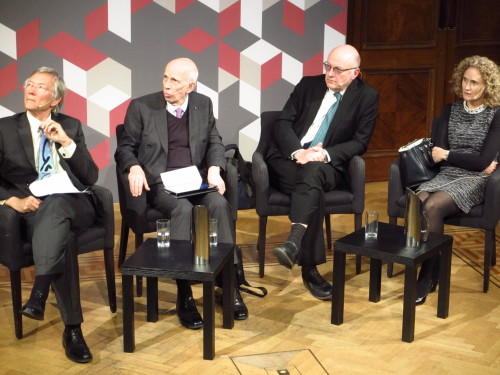
Brexit panel: left to right are Rolf Tarrach, Ole Petersen, Mark Ferguson and Gail Cardew.
By Hamish Johnston
Here in the UK it’s easy to forget that our exit from the EU could have significant unintended consequences for scientists in the remaining 27 member nations.
Yesterday, I was at a public forum called “Brexit: the scientific impact”, which was held at the Royal Institution in London. While there was much discussion about domestic challenges, the second session – “Brexit: the scientific impact on the EU-27” – provided a fascinating insight into the challenges facing the UK’s neighbours.
View all posts by this author | View this author's profile
LEGO acoustics, potato cannons go to war, personal politics and popular science
By Hamish Johnston
In the above video Brian Anderson of Brigham Young University shows how the acoustic concept of “time reversal” can be used to knock over a series of LEGO figures using sound. The idea is that sound waves are broadcast into an environment and captured by a sensor at a specific location. The signal is then used to work-out how the sound waves bounced about before reaching the location and this information is then used to target that specific location with subsequent sound waves. In the demonstration, sound knocks over 29 LEGO figures one-by-one. It’s very impressive and entertaining as well.
View all posts by this author | View this author's profile